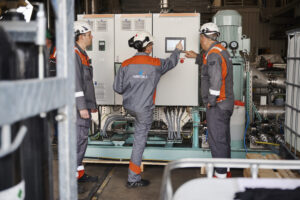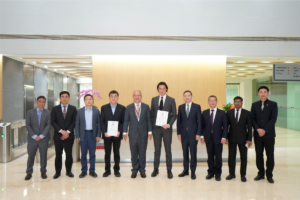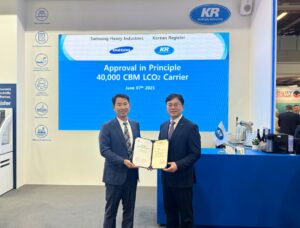Value Maritime has five CO2 capture systems onboard ships, with more coming. The issue of the CO2 disposal supply chain needs addressing
While there will be some ironing out of regulatory wrinkles on the sue of nascent carbon capture technologies to be installed on ships to meet CO2 emission reduction targets, one company, Value Maritime, is pushing ahead regardless.
Netherlands-based Value Maritime is barely six years old, selling a technology concept it says can clean exhaust gases of a number of pollutants. The company began it’s life with the development of an exhaust cleaning system that removes sulphur oxides and particulate matter, one of a number of companies selling such technologies that allow ship operators to use cheaper fuel oils than more expensive low sulphur fuels to meet emissions regulations.
It has also been working to expand the offering of the system, the brand name is Filtree, to remove CO2 from a ship’s exhaust. While the company has a number of its original Filtree systems onboard ships there are now five of them that have been fitted with a system to remove CO2 gases from the exhaust plumes.
And by the time the IMO member states send their representatives to the Marine Environment Protection Committee in early July to debate shipping’s decarbonisation strategy, potential market based measures and how carbon capture technologies could fit into the recently agreed CII and EEXI rules and calculations, Value Maritime could have a further 15 systems onboard ships says VM Director Yvette van der Sommen.
The company’s expansion seems to be so rapid that van der Sommen, who was brought it the company two years ago will move out to Singapore later in the year in order to hep Value Maritime with its expansion plans.
Value Maritime is perhaps a step or two ahead of the nine or so companies and projects that are developing shipboard carbon capture technologies. And their process for handling the CO2 they can capture shows how ship operators, technology developers and other stakeholders need to look at the whole value chain and not only the onboard process of extracting CO2 from an exhaust plume.
Why before and after the technology bit is just as important
Capturing CO2 is not new, but is still not widespread despite the hype sweeping energy industries that are promoting it heavily in their decarbonisation strategies. Even the International Energy Agency is bullish of CO2 capture as a much needed addition to the arsenal of technologies to prevent more CO2 form entering the atmosphere, despite the number of active and successful plants being in the tens not hundred.
Value Maritime’s process includes using a liquid absorbent to catch the carbon dioxide and the recent announcement of an installation on an Eastern Pacific MR product tanker, the 2020-built Pacific Cobalt shows the approach to this.
In the latest of the Fathom World Aronnax Podcast, Van der Sommen explains how the absorbent, she declines to go into details about its composition, is loaded into a converted 770 cu m fuel tank, so at ambient temperature and pressure It is then fed into the FIiltree system, which she says is a plug-and-play system, installed behind the ship’s funnel, and then sprayed through the exhaust and then returned to the same tank.
The absorbent has a maximum absorbent capacity, so can be refed through the exhaust until that capacity is reached. In the press release from EPS and Value Maritime, a value of 40% of CO2 emissions is referenced. This is in relation to the fuel use on the expected route of the vessels and highlights that for longer voyages, more absorbent will be needed.
When in port the absorbent will need to be pumped ashore for treatment. The process removes the CO2 and returns the absorbent back into its natural state ready for reuse.
Van der Sommen explained that this is why Value Maritime were happy to team up with Eastern Pacific, and another company, XPress Feeders to overcome the chicken and egg scenario where ports and terminals will not have the capacity to build infrastructure and there is no resource to clean the absorbent and either utilise or dispose of the CO2. By teaming up with he shipowners they can overcome these challenges.
At the moment Value Maritime is handling the offloading and cleaning part of the process, and likely finding a potential market for the CO2. However is raises the interesting point about the CO2 value chain, the need for ports and terminals to be invested into this process.
It also raises the issue of how a physical carbon dioxide market, as opposed to the trading of allowances or credits, will grow in the future and how shipping’s captured CO2 could fit into this.
For EPS the benefit is that it can now record reduced CO2 emissions, which given the vessel is in European waters and soon to be subject to the European emissions trading scheme will save it the costs of trading CO2 allowances.





































